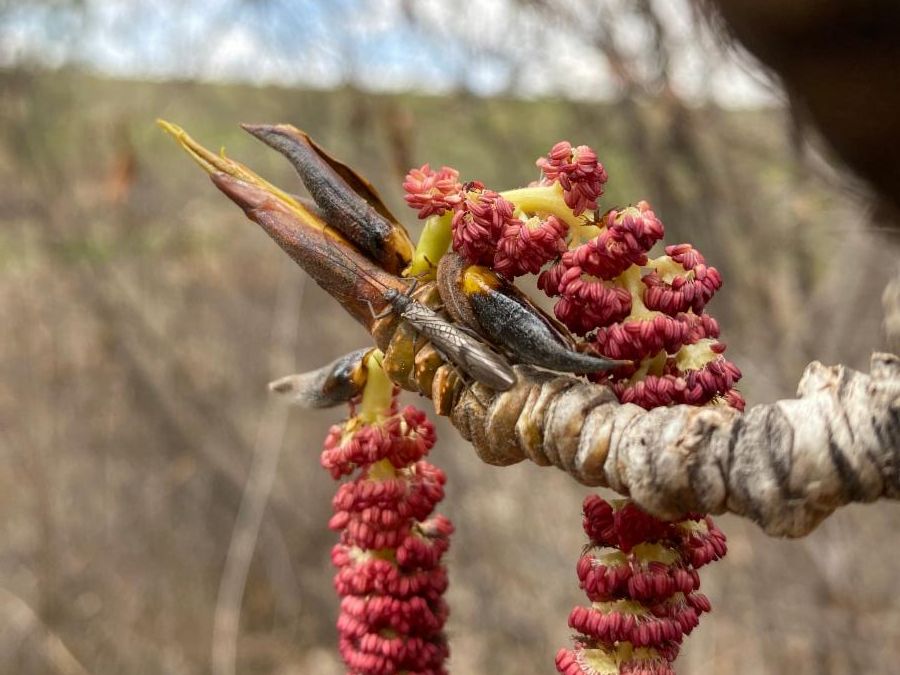This week we’re finally seeing some of our early butterflies, as well as some early-emerging aquatic insects. Our local arthropods are certainly taking advantage of the few-and-far-between sunny days; before we know it, we’ll see an explosion of activity as temperatures warm and day length increases. In the meantime, be like the bugs and get outside to soak up some of that much needed sunshine! (When we have it.)
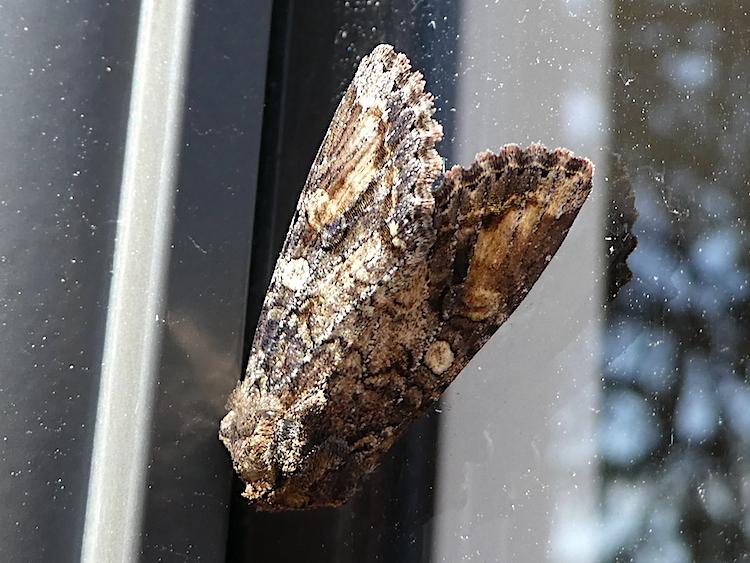
Pinion Moth (Lithophane pertorrida)
Pinion moths are cryptic, square-“shouldered” moths that overwinter as adults, which is why we end up seeing them earlier than other moths. As caterpillars, some species in this genus are known to feed on other insect larvae; an uncommon trait amongst Leptidopterans (butterflies and moths).
Photo by Glenn Marangelo, April 16th, 2023. Missoula, MT.
Brown Water Scorpion (Ranatra fusca)
With their slender shape and ability to blend in with aquatic plants, it’s no wonder that water scorpions are often referred to as “water stick insects.” However, water scorpions are true bugs, and more closely related to water striders. Their piercing and sucking mouthparts allow them to pierce their prey (usually smaller insects) and consume them from the inside out.
Photo by Heather King Minster, April 16th, 2023. Missoula, MT.
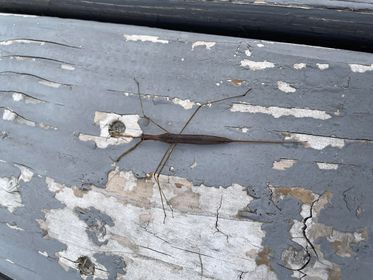
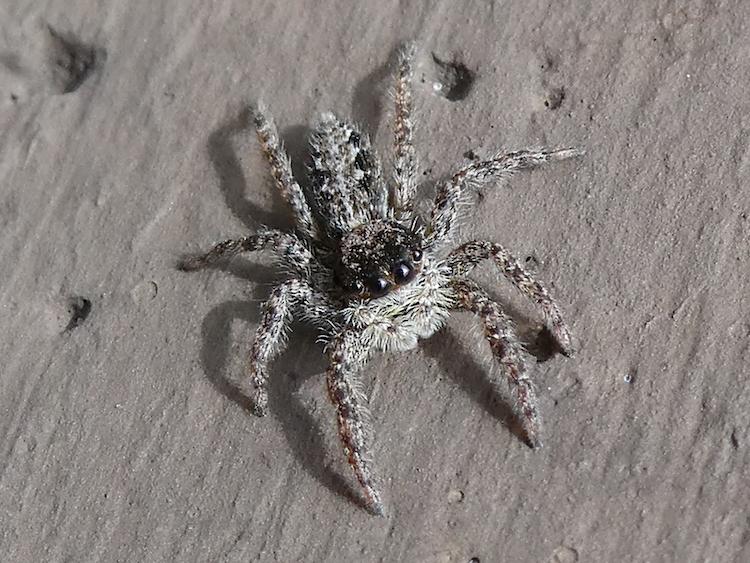
CA Flattened Jumping Spider (Platycryptus californicus)
Even those who are spider-averse can’t help but find jumping spiders cute. Their gigantic puppy-eyes are used for hunting; instead of spinning a web, jumping spiders stalk their prey, carefully planning the perfect route to hunt down and lunge at any unsuspecting dinner item.
Photo by Glenn Marangelo, April 16th, 2023. Missoula, MT.
Mourning Cloak (Nymphalis antiopa)
Our state butterfly is often the first and last butterfly we see every year. This species overwinters as adults, and is often seen emerging on sunny days to warm up. After the adults breed, they die off, and the following generation takes wing in late summer to early fall.
Photo by Kelly Dix, April 16th, 2023. Larry Creek, Florence, MT.
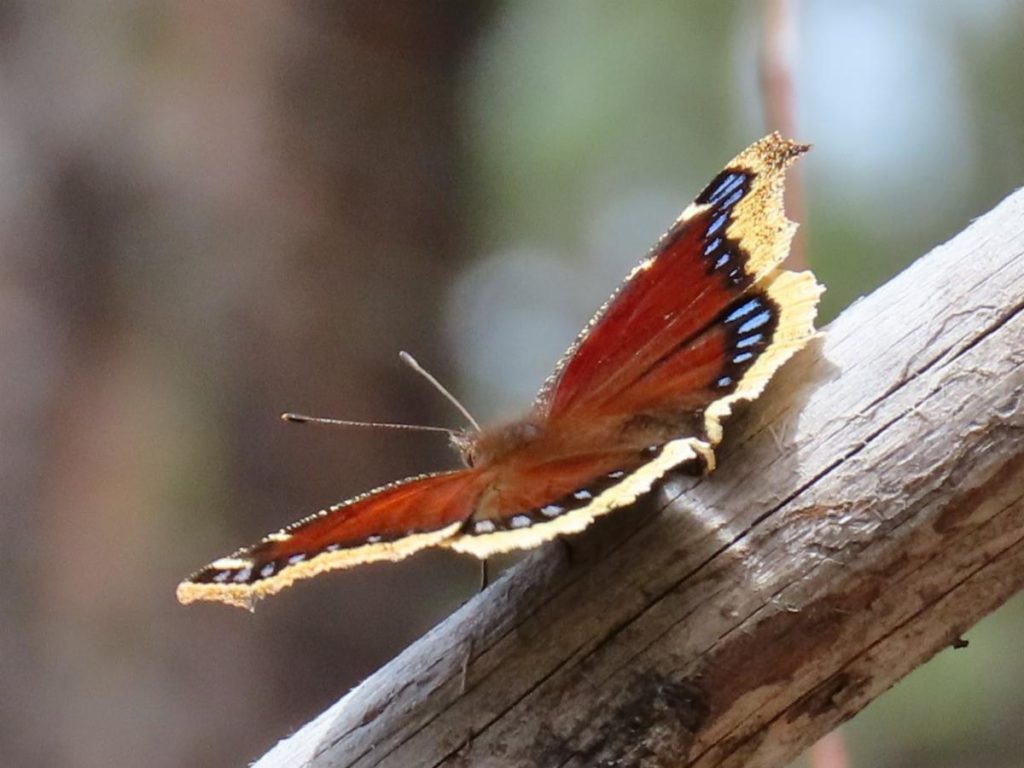
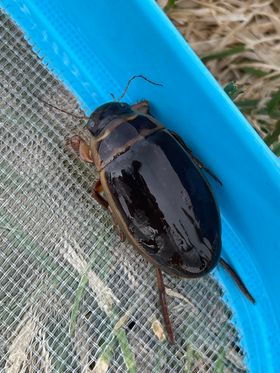
Predacious Diving Beetle (Dytiscus sp.)
Beetles in the Dytiscus genus are voracious aquatic predators, feeding on everything from mosquito larvae to small salamanders. This individual was found in an above ground pool, along with the earlier mention water scorpion.
Photo by Heather King Minster, April 16th, 2023. Missoula, MT.
Spring stonefly (Zapata sp.)
Referred to as “tiny winter blacks” by fly fishermen, stoneflies in this genus are distinguished from other early stoneflies by the “X” shape in their wing venation. Like most stoneflies, the aquatic nymphs require clean, cold-flowing streams to thrive, and are commonly used as indicators of stream health.
Photo by Brenna Shea, April 20th, 2023. Missoula, MT.
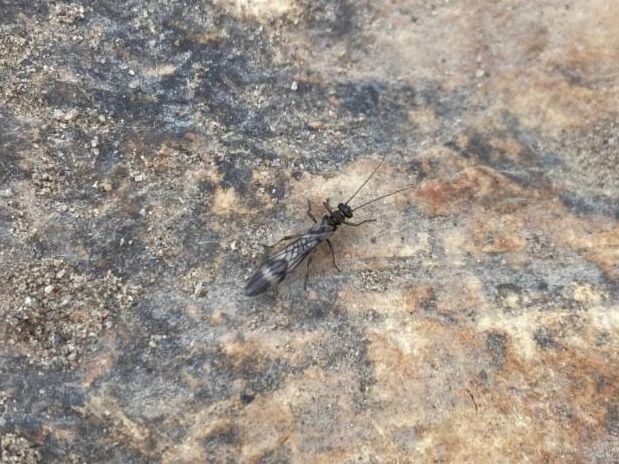
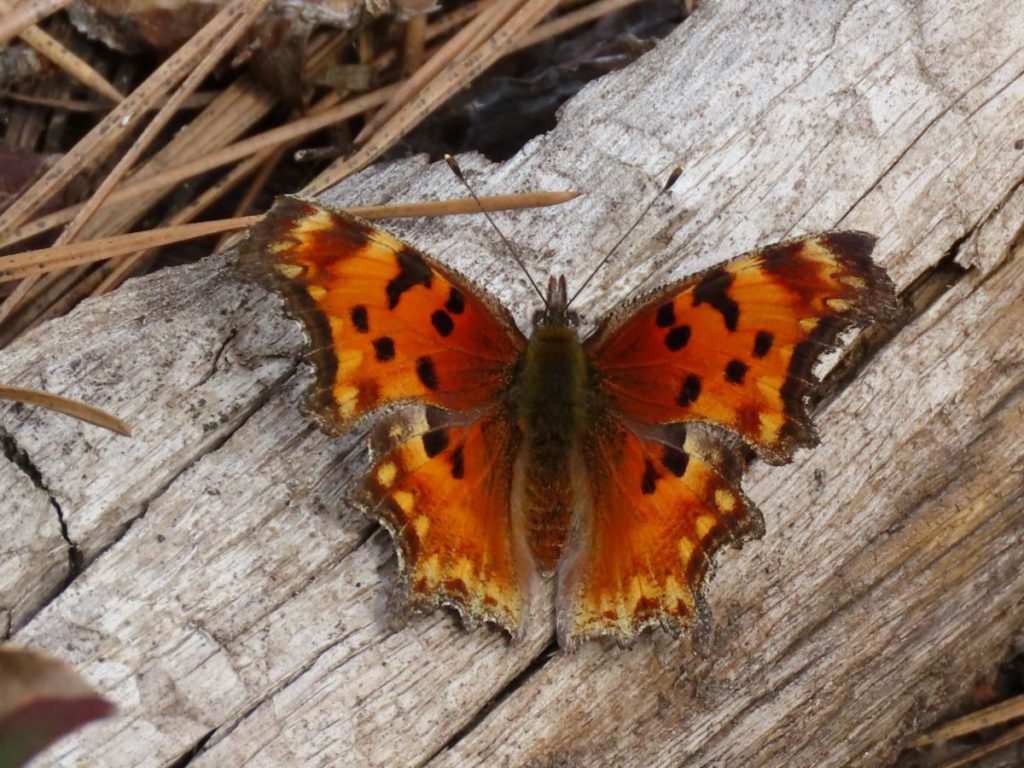
Hoary Comma (Polygonia gracilis)
Comma butterfiles are easily recognized by their bright orange patterning and ragged-looking wings; but their name comes from a distinctive spot on the underside of their wings. When the wings are folded, comma butterflies practically disappear into the foliage. The underside of their wings display cryptic colors, save for a distinctive, comma-shaped eyespot.
Photo by Kelly Dix, April 16th, 2023. Missoula, MT.
Snow fleas (Hypogastrura nivicola)
Snow fleas are not true fleas, but a group of arthropods known as springtails. Springtails had their insect status revoked and were reclassified as Entognatha, with mouthparts that are enclosed within the head. Insects, on the other hand, have external mouthparts.
Photo by Sandy Olsen Arnold, April 16th, 2023. Missoula, MT.

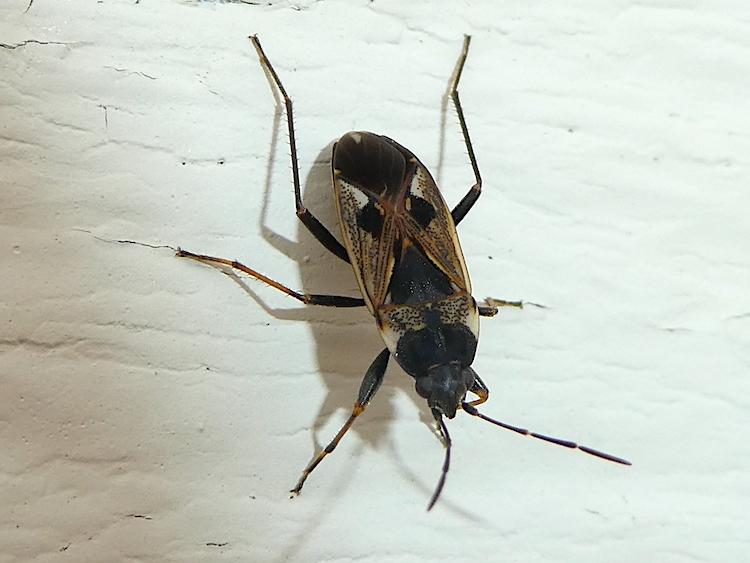
Dirt-colored Seed Bug (Rhyparochromus vulgaris)
We’re not bullying this bug by referring to it as “dirt-colored”; the genus Rhyparochromus literally means “dirt colored” in Greek. This small, 6mm long true bug is another European import, but is not considered a pest due to its preference for seeds (as opposed to munching the plants in our gardens).
Photo by Glenn Marangelo, April 16th, 2023. Missoula, MT.
Winter Stonefly (Taeniopterygidae)
Winter stoneflies are unique insects that emerge from their aquatic nymphal stage in (you guessed it) late winter; this adult may even be considered a late bloomer, as April is typically the last month they are observed in the field. Not much is known about this group of stoneflies because, as suggested by the late naturalist H. B. Hynes, they are “most abundant early in the season before the average entomologist has emerged from hibernation.”
Photo by Brenna Shea, April 20th, 2023. Missoula, MT.
